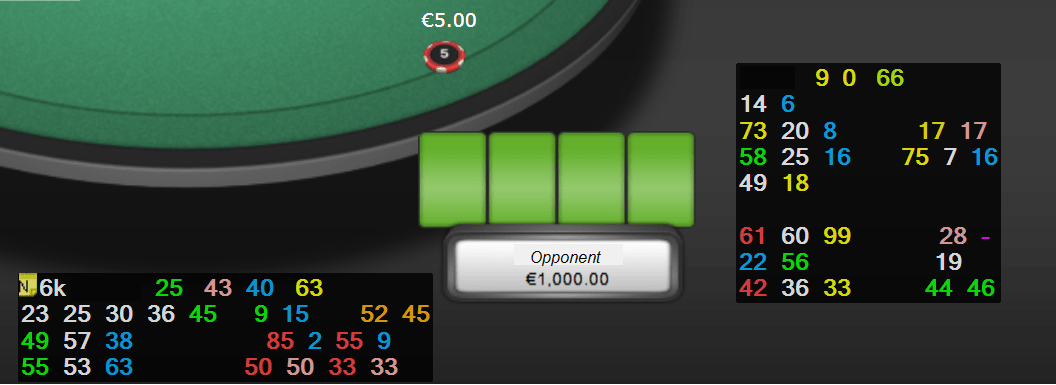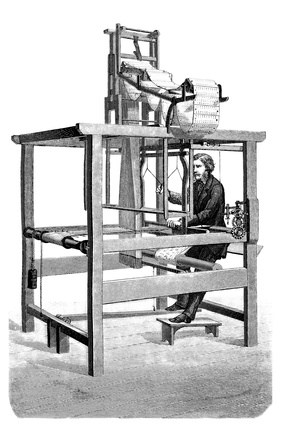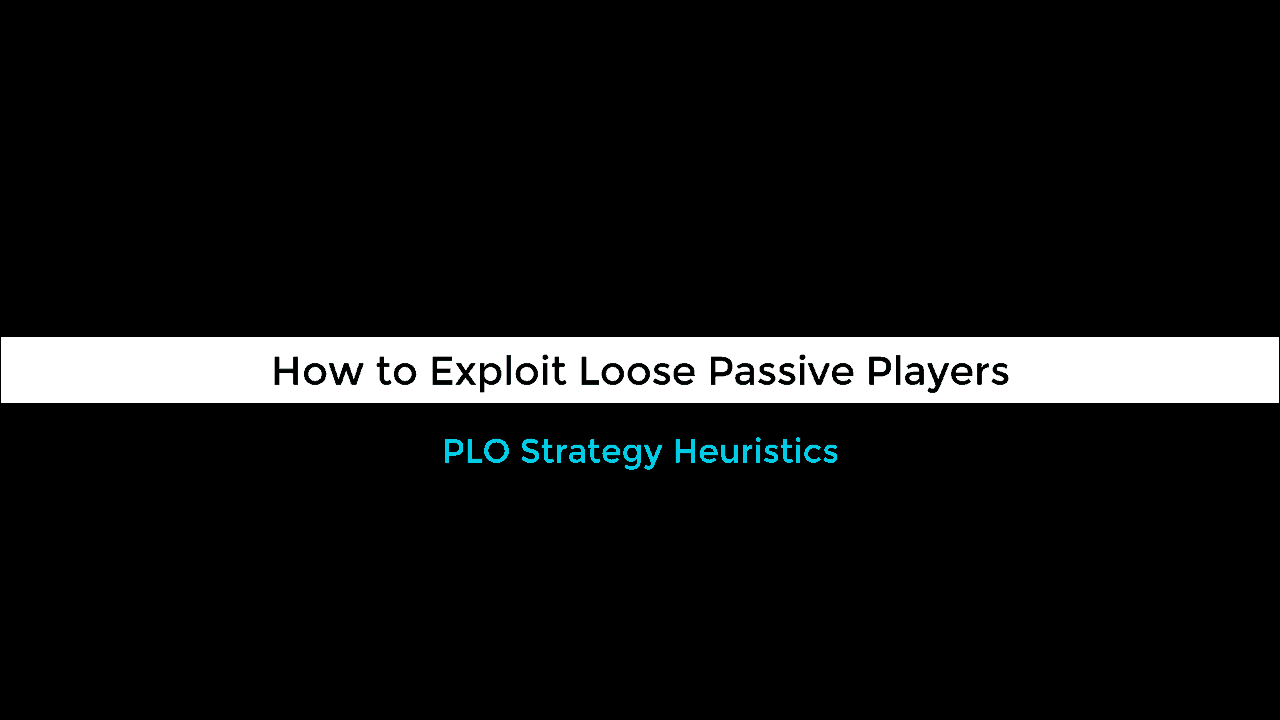Terry Pratchett and Neil Gaiman, Good Omens
Poker is not just a game of cards.
Modern online poker is played over multiple virtual tables simultaneously, with decisions for significant sums of money taking place every second of every day. In Pot-Limit Omaha poker, my game of choice, we play 70 hands per table per hour. The average pot size each hand in a $2/$5 stakes game is around $200. If you play 7 tables at once, a minimum for many professional players, you will play 500 hands an hour, and make at least 1 decision per hand. A professional poker player makes thousands of micro-decisions per hour for many thousands of dollars. With so much at stake, even a small percentage advantage in decision-making skill compounds to a significant profit over time for the astute player.
Naturally, with software eating the world, many online tools have been developed to assist players in interpreting the avalanche of data generated from playing poker. The tool most widely employed is a Heads-up Display (HUD) which plays a role similar to that of a pilot’s HUD: it provides real-time data to assist the user’s decision making.

Example of a Heads-up Display (HUD) of statistics which describe an opponent’s play
To assist the reader unfamiliar with the modern game, I’ve provided a screenshot above of my own HUD. There are 58 statistics displayed above, with the ‘6k’ number representing the sample size of hands over which these statistics have been collected. For in-game play I have memorized what each statistic describes through a combination of positional and chromatic cues. My opponents also have their own statistics on my play, yet every player’s HUD is different since the selection of which statistics to display is left for the user to decide.
Not everyone in the poker community is pleased with the proliferation of Heads-up displays (HUDs) in online poker. In fact there is a vocal minority who periodically lament the technological advances in poker as having “ruined the game”. This minority consists mainly of experienced players who advocate a poker purist philosophy; they claim that online poker should be as close a representation of the live version as possible
Many of these players argue for a ban on HUDs and try to stir up support for new regulations from the poker sites themselves to prevent their use. So… do they have a point, are HUDs ruining poker or does the technological progress in the game enrich it? To better understand the true nature of their objections we need to examine the origins of the early 19th century English reactionary group who came to be known as Luddites.
The Luddite fallacy at the virtual felt

A 19th Century Jacquard loom. Those punched cards at the top of the loom controlled the pattern being woven.
Their perspective is best presented from the pen of one sympathetic to their plight; Richard Coniff writes in ‘Smithsonian’ magazine,
“…it’s possible to live well with technology—but only if we continually question the ways it shapes our lives. It’s about small things, like now and then cutting the cord, shutting down the smartphone and going out for a walk. But it needs to be about big things, too, like standing up against technologies that put money or convenience above other human values.”
That’s an eloquent way to romanticize smashing other people’s property with sledgehammers. This defense fails to recognize that money is an abstraction that represents the integration of values of all members of the community and that ‘convenience’ depends on perspective. When the Luddite destroys someone else’s technology of mere convenience it saves him the inconvenience of adapting to technological changes.
Economists term the notion that technological unemployment leads to structural unemployment the ‘Luddite fallacy’. Technology, as it renders one group’s skill set obsolete, creates opportunities for those willing to adapt by embracing a new skill set.
The incumbents will often invoke ethical arguments to justify almost any action to impede technological progress taking place in their field of labor. In all cases, the ‘human concerns’ of the directly displaced group are presumed to take precedence over the ‘human concerns’ of the far greater number of people who are not .
So some members of the old guard of poker professionals are being displaced by players better able to integrate HUDs into their game. Rather than adapt, they vocalize concerns that, since some players are leaving poker due to the introduction of HUDs (technological unemployment), the entire ecosystem of poker is under threat (structural unemployment). The Luddite fallacy rears its head at the virtual felt. But why exactly are these players being displaced? How does the emergence of HUDs really change the way poker is played?
To answer this question we need to examine more closely what differentiates poker as a ‘complex game’. We’ll establish the complex structure of poker by contrasting it with the simple structure of another well-loved game… Chess.
Why Chess is Not a Complex Game
That chess should be more ‘complex’ than poker seems obvious to an observer of both games. Those who succeed at chess have typically dedicated thousands of hours of intense analytical study to the game. Meanwhile, many of the most successful poker players have analytical skills which seem limited by comparison and few of them can explain exactly how they win. So how can I justify the claim that it is poker, specifically online poker, and not chess that is the complex game?
To make the answer clear, we will first dismiss a popular misconception regarding game size. In part, chess appears more ‘complex’ than poker because it has more basic rules. Yet if you interpret rules as constraints then it becomes intuitively obvious that the additional rules of chess reduce rather than increase the number of possible game states. 2 The game-tree complexity of popular poker games is much greater than chess, but exactly how to measure this complexity is still an area of research.
I mention these details to elevate the reader’s understanding of poker, not to dismiss chess. Chess is a complicated game, it’s just not complex. In fact, like many other simple games, the solution to chess could in theory be completely described by a set of conditional ‘if-then-else’ rules.
To fully understand the implications of this, consider how play would proceed in each game if both were solved and that solution was known by all players. For chess, White would have a single correct first move. Black would respond with his own single correct response and so on until the inevitable conclusion. Yet since the outcome would be known by both parties in advance, the ‘game’ would be a futile exercise and nobody would bother to play. The full solution to the game would destroy it. Chess would cease to be played by humans. But poker wouldn’t.
Poker retains a degree of uncertainty even when the full solution is known. The form that a game-theoretic equilibrium solution would take is as a set of specified frequencies for every betting action for every possible situation. The solutions to even the simplest poker games involve ‘mixed strategies’. In simple terms, a mixed strategy means that when holding a given hand in a given situation your optimal strategy would consist of playing one way X% of the time, another way Y% of the time and so on. In poker games we do not find the one-to-one best response mapping that is found in the ‘pure strategy’ solutions for games like chess.
Games with mixed strategy solutions are not necessarily more sophisticated than games with pure strategy solutions. The equilibrium strategy in the playground (or bar for bigger children) game ‘Rock-paper-scissors’ entails selecting each strategic option (Rock, paper or scissors) 1/3rd of the time. So requiring mixed strategy solutions is not a sufficient condition to make a game complex.
Why Boris Becker is no Game Theorist
The other key characteristic of optimal strategies in complex games is that they are ‘path-dependent’. This is a fancy way of saying that the best play in a given situation depends on how you got there or, more pithily, “history matters”. This is not the case for path-independent games like chess where the best strategy only depends on the current state of the game. If I show you a chess position and tell you whose turn it is, you have all the information you need to formulate your strategy. Chess puzzles have long featured in newspapers for precisely this reason: they can be printed as a simple diagram.
Many televised sports could also be classified as path-independent games, where if you freeze the position and know the (motion) vectors of all the players on the field and the ball you have enough information to decide on (argue about) the optimal play. Path-independence explains the enduring popularity of post-match freeze-frame analysis in these sports (It does not however explain the enduring unpopularity of the post-match freeze-frame analysts.).
Yet in poker, any competent strategy must be path-dependent; consider how difficult your betting decisions would be if you knew only the current size of the pot, the board and your cards but not the betting that took place earlier in the hand3.
To my knowledge there is no prior definition of a ‘complex game’ in the literature, so I’m going to provide one here. A complex game satisfies three conditions: it exhibits stochasticity (random events occurring over a known probability distribution), imperfect information (some information is hidden from each player) and partially observable outcomes (some information might never be known)4.
Optimal play in complex games requires the use of mixed strategies dependent upon the history of actions in the hand and our opponents’ prior play.
Beyond Equilibrium: Prelude to a philosophy of poker
Our analysis is not yet complete. In the chess example, if Black made any move other than the ‘correct’ first move, White’s response would still be 100% clear from the full solution to the game. Yet in poker another question matters, which is, “What strategy maximizes profit against my opponent’s strategy?” It is true that by adhering to the game-theoretic equilibrium (henceforth GTE) solution we would inevitably grind our imperfect opponent down over a large enough sample of hands.
However we do better by selecting a strategy that exploits our opponent’s present strategy. Whilst GTE strategies are opponent-independent, profit-maximizing strategies are opponent-dependent. As a simple example, if our opponent was known to be bluffing with too high a frequency in a given situation, we could exploit him by calling with even weaker hands than the GTE strategy would dictate.
Of course, if we are calling more frequently than GTE would dictate, our opponent can improve his profit unilaterally by bluffing less frequently. So we need to continuously monitor data from the game to detect how likely it is that our opponent is deviating from equilibrium strategy and in what way he is doing so. It is this latter, monitoring component, which has no chess counterpart and which distinguishes poker as a complex game. And what tool do we use to monitor our opponent in this manner? A HUD.
Heads-up Displays then do not degrade or simplify online poker; instead they elevate it as a game into it’s own domain- the first real-time Data Sport.
This article represents my first in a series which will demonstrate the value of the ‘Pokerspective’- how the insights we gain from attempting to solve poker problems can help us solve problems in other domains. The series will be helpful for anyone who makes important decisions with imperfect information. If you’re a regular reader and you’d like to help out then please share this article with any friend you think would enjoy it.
Until next time,
Quad







Your writing style and resource recommendations are both fantastic. Thank you for connection to new resources that i deeply value. I rest assured you will continue to write fabulous articles in a writing style that is clear and interesting.
Hi Rob,
Thanks for your comment and welcome to the blog.